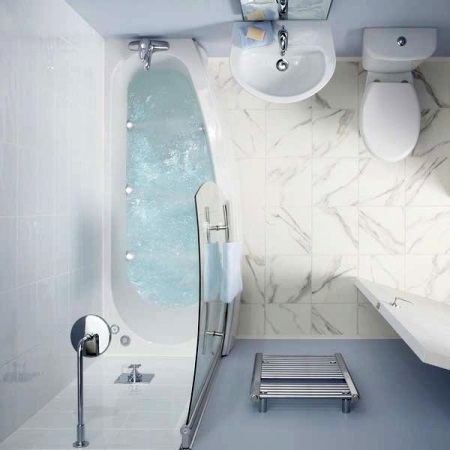Tiles for a small bathroom
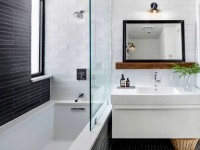
The most popular finishing material for the bathroom is ceramic tiles, as it is practical, unpretentious in care and resistant to moisture. A huge range of tiles includes products of different sizes and colors, which allows you to choose the most suitable material for decorating the room, based on its geometric features. Small bathrooms are particularly difficult to design, because for them it is necessary to choose tiles more carefully, both in color and size, in order to visually expand the space.
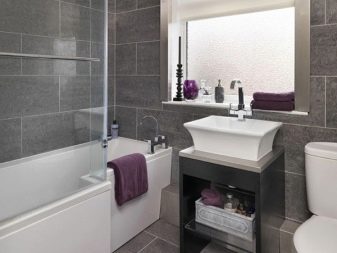
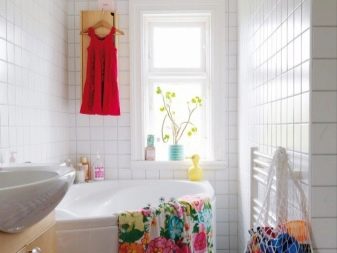
Attention to color
When decorating rooms with a small area, it is necessary to try to visually enlarge them, so it is recommended to use finishes in light colors. But it should be taken into account that tiling the walls and floor exclusively with white ceramic tiles will be inappropriate, as it will cause associations with a medical institution. In addition, this solution will not give the effect of expanding the space, and simply increase the lightness of the bathroom.

It is best to use white tiles with materials of other tones:
- light blue or blue;
- muted green or lettuce;
- light yellow or pale lemon;
- peach;
- lavender
- sandy
- terra cotta;
- pearl gray.

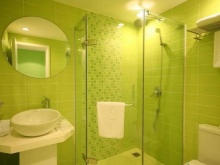
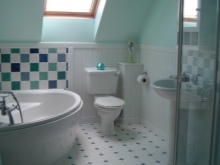
Despite the small size of the bathroom, in addition to light tiles you can use dark tiles, if you choose the right shades. For example, a muted dark blue elements, or marsala colors, will give the interior depth, and thus will not negatively affect the geometry of the room. It is important to take into account that on dark tiles will be visible scale, so it requires more care.
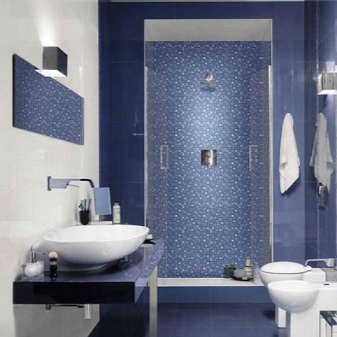
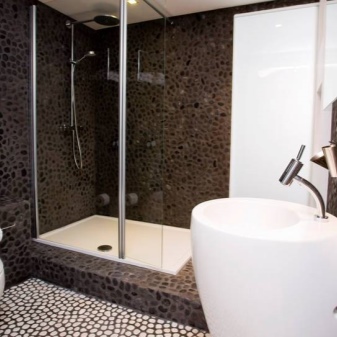
Bright inclusions will help to enliven a bright bathroom interior, and the tiles can be not only monochrome, but also with a pattern. It is best to use such finishing material in the form of a border, several vertical strips, or even mark contrasting elements in a chaotic order.
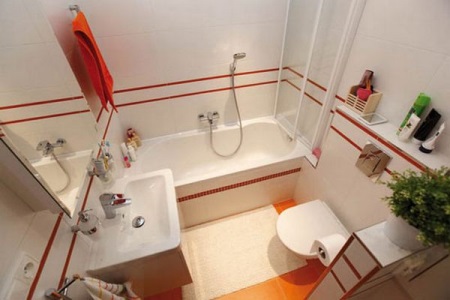
Color combinations
To create a harmonious interior of a small bathroom, you need to choose the right combination of color gamut of finishing materials.
All shades are divided into 3 categories:
- Cold - blue, light purple, olive;
- Warm - peach, sand, beige, light yellow;
- neutral - light grey, white, lilac, pink.
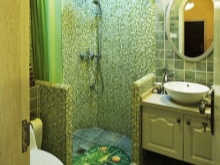
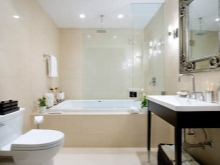
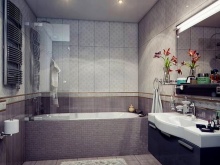
It is not recommended to combine warm and cold colors in the room, but they can be diluted with neutral colors. Planning to finish the bathroom with a tile of two colors, it is important to select them in such a way that they do not contrast, and complement each other. In addition, the lightest shade must be dominant, so it should be tiled most of the room.
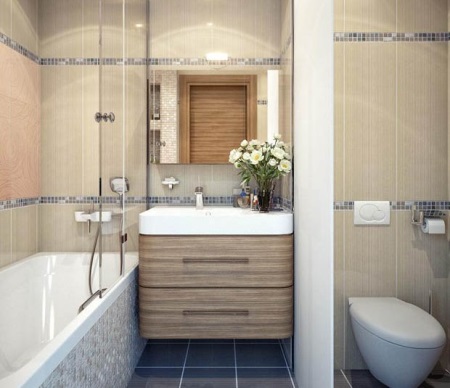
The most advantageous combinations are:
- blue and blue;
- pink and soft purple;
- white and light gray;
- Beige and ivory.


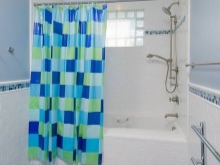
For very small bathrooms, you need to choose ceramic tiles of the same color, but in different shades. The lighter materials are used for the smaller walls and the darker ones for the larger walls. In this way, you can visually change the geometry of the room. To increase the space, it is also recommended to use horizontal lines, laid with tiles of dark colors, and to make the ceilings seem higher - the lines should be vertical.
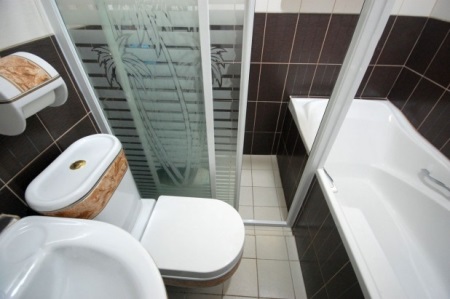
Is it appropriate to use large tiles in a small bathroom?
Choosing tiles for decorating a small-sized bathroom, you should pay attention not only to its color, but also to its size. Many consumers believe that in this case, large elements will be inappropriate, but, according to designers, large tiles may well be used in the interior of the bathroom.
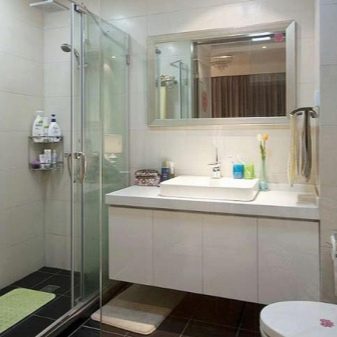
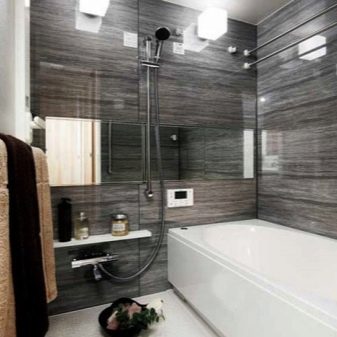
The correct location of tiles of large size allows you to visually increase the room, but it is not necessary to cover the entire wall with them. Much better will look a vertical strip of large squares or rectangles on a larger wall, for example, in the center. As for the floor, a large tile will not be an appropriate solution, because it will have to be cut.
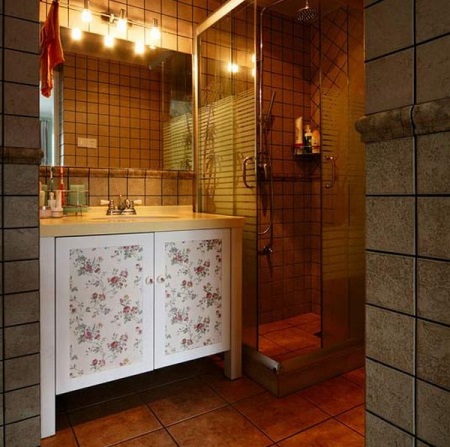
The optimal size of tiles for finishing the floor and walls in the bathroom is medium, which is 20x20 and 20x30 cm. The choice of tiles will depend on the geometric features of the room. If the bathroom is rectangular, then for finishing it is recommended to use products of size 20x30 cm, and for the square fit 20x20 cm. Experienced masters argue that the correctly selected tiles in size and shape, allows you to achieve a more pronounced effect of expanding the space, than in the selection of a successful color scheme.
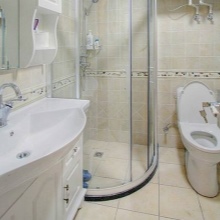
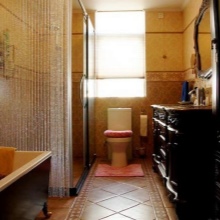
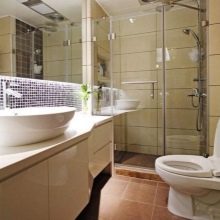
Decor
In any interior must be present decorative elements that will enliven the design, and give a sense of completeness.
In the bathroom, this task can be performed with the following materials:
- Tile with a relief texture - it can imitate natural stone, brick, fabric canvas;
- mosaic of contrasting colors, or with glass, metal and mirror parts;
- patterned tiles - they can be used individually or as decorative strips;
- mirrored products - they should be used in small quantities, and by no means cover the entire wall;
- grouting of joints - it should not only be neat, but also match the color of the tile;
- Decorative frieze or borders - commonly used elements, which bring a certain zest to the interior.
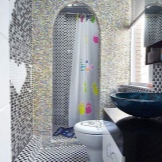
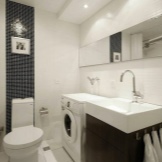
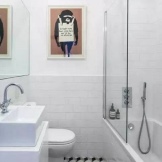
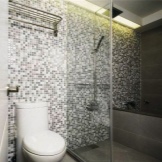
When choosing a decor, you should consider the color scheme of the main ceramic tile, because it should complement the design and not break out of the overall concept. Attractively look shiny details of gold and silver color, but an excessive amount of them can spoil the overall picture.
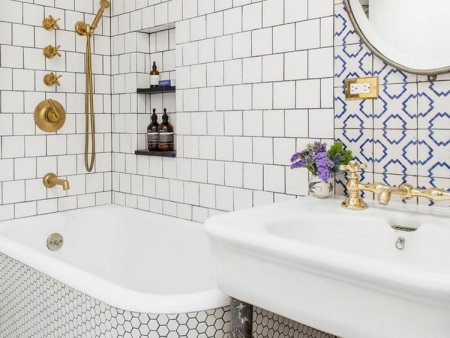
Selection tips
Choose a good ceramic tile for finishing a small-sized bathroom - not an easy task, especially if the consumer has not previously been engaged in the repair himself.
Before you go to buy finishing materials, it is recommended to read the advice of experienced craftsmen and designers:
1. most of the room should be tiled with light tiles to visually increase the space. If there is a desire to use dark tones, they should be used to finish the lower part of the walls or floor.
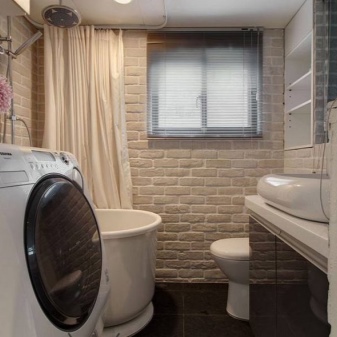
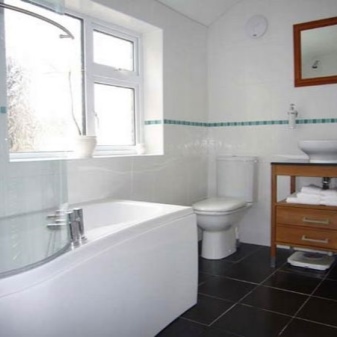
2. For a small bathroom, it is better to choose glossy finishing materials, as they have a mirror effect. The only disadvantage is that on the shiny dark tiles will be visible traces of water, so it should be wiped often.
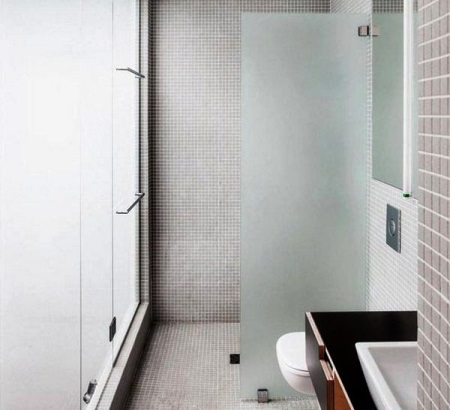
3. In the design of the bathroom with a small area is not recommended to use more than 3 colors.
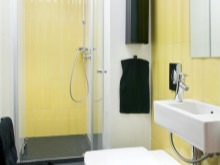
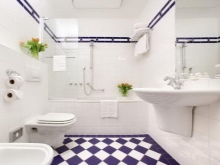
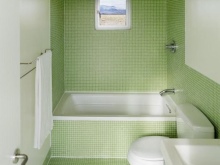
4. Finishing materials in bright colors will be appropriate in a minimal amount, for example, as a decor, or to emphasize certain elements of the interior.
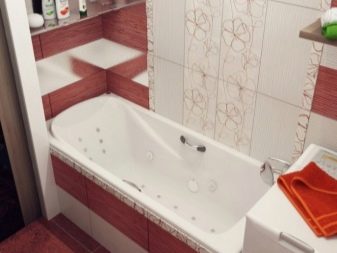
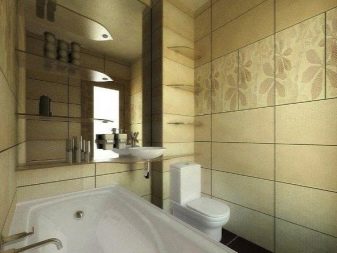
5. Ready-made collections of designer tiles will greatly facilitate the task of selecting materials by color and style.
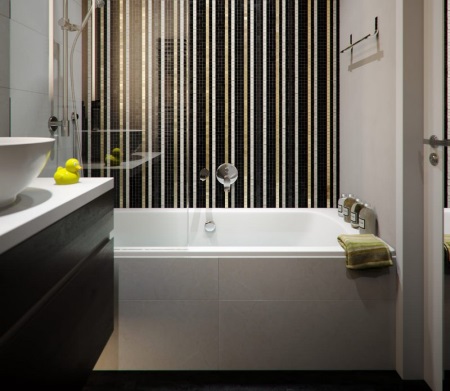
6. When buying facing materials it is important to pay attention not only to its design, but also to its performance characteristics. Products must be of high quality, resistant to mechanical damage and to temperature changes, so there is no need to save on them. All the necessary information about the characteristics of the tiles is placed by the manufacturer on its packaging.
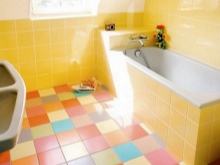
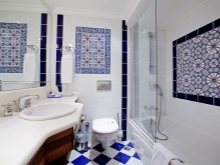
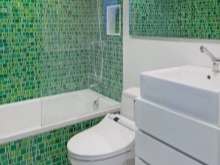
Examples of successful solutions
With the right approach, you can harmoniously combine 3 types of tiles at once - a rectangular medium-sized, large square and small mosaic.
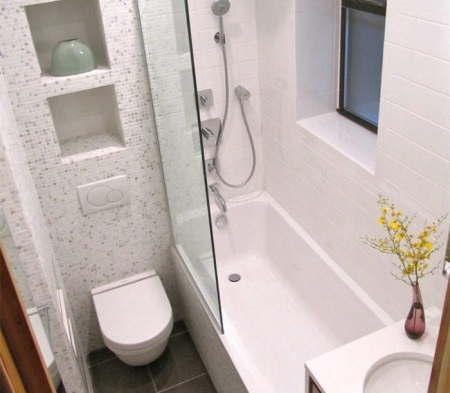
Wishing to create a bright bathroom interior, you should not use only white, the color, it is better to complement it with light gray tones.

A small square bathroom can be visually expanded with a vertical layout of rectangular tiles, and both on the walls and on the floor.
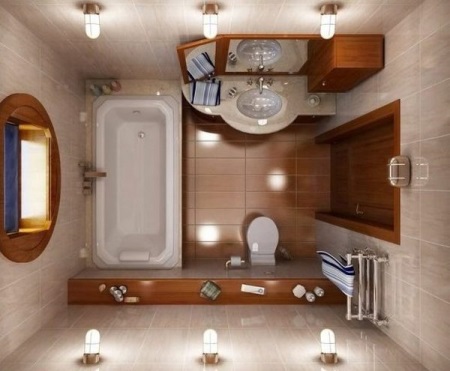
Interior in blue colors will perfectly complement the floor tiles imitating marble.
